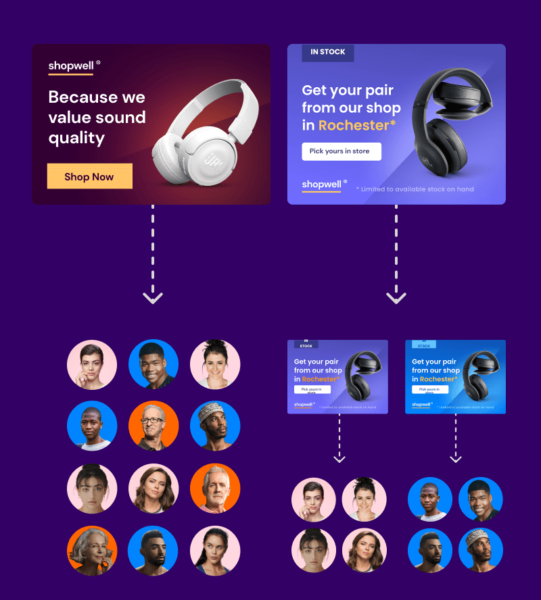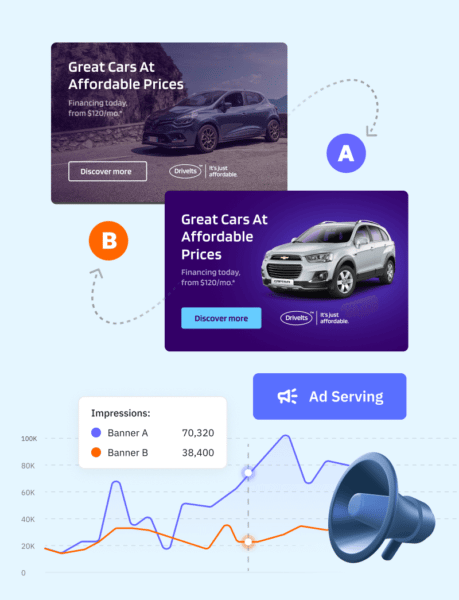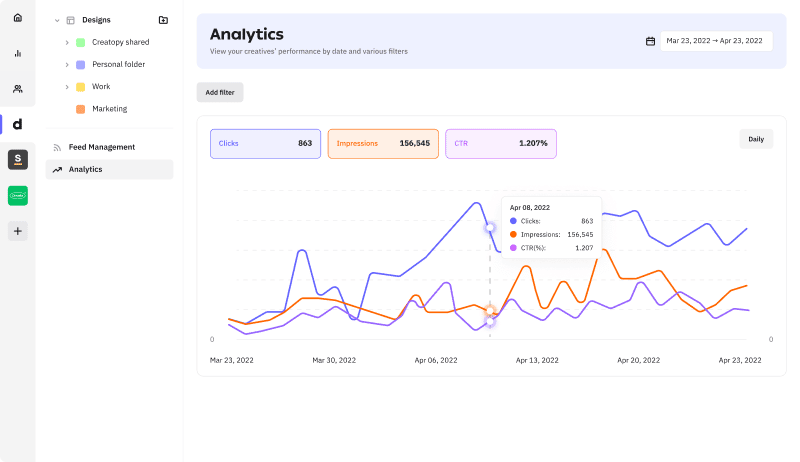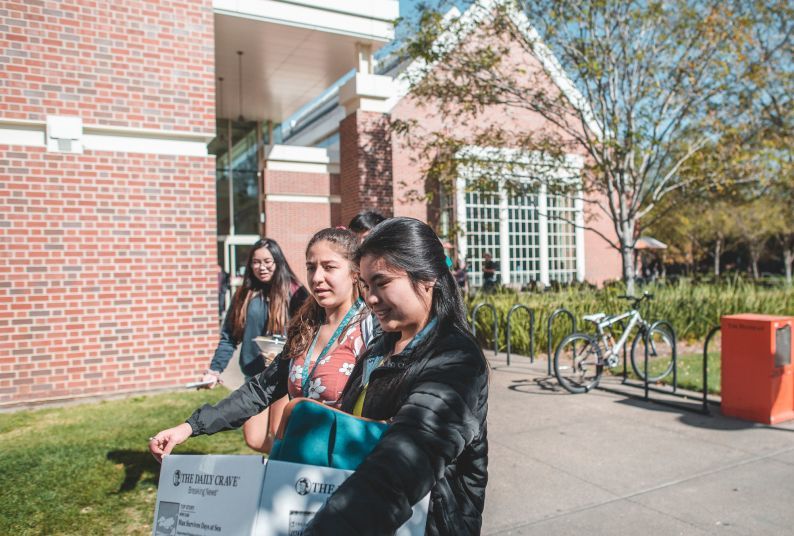
Display advertising is a powerful tool for marketers when used at its full potential.
Preparing and launching a new display ad campaign is not necessarily equivalent to setting it up for success. To set it on the right path, one must also engage in the practice known as ad campaign optimization. In a nutshell, this means running experiments, analyzing performance data and finding improvement opportunities.
With the ongoing economic unrest, 2023 is bound to be a challenging year for paid advertising, and campaign optimization is more important than ever. Here are five expert tips to help you optimize for the highest performance and maximize your display ads’ ROI in the upcoming year.
1. Focus more on creative production and personalization
As we prepare to enter the new year, many voices claim that the creative is king, and we’re about to join the chorus. Creative optimization opens opportunities for increased brand recognition and higher levels of engagement, which is why it’s becoming more and more important.
Consumer demand for personalized experiences is on the rise. To meet these expectations, advertisers must create relevant ads at scale while ensuring the workload remains manageable.
The easiest way to do this is to turn to creative automation. Versioning tools and data-fed ad design simplify things, allowing you to generate personalized assets for entire campaigns instantly.
If you want to go the extra mile and increase the chances of conversion, you can give dynamic ads a try. Because some of their elements change according to data about the viewer (e.g. ad copy depending on location), you can be sure you are delivering the right message at the right time.

Regardless of the type of ads you run, having all creatives on-brand is always a must. Besides ensuring users have a familiar and authentic experience every time they come across your ads, it also helps build brand trust.
Another aspect to bear in mind is optimizing your ads for different devices. For example, if your audience is predominantly mobile, use the top-performing mobile banner sizes when designing your ads and consider rich media or animated ads to draw attention.
2. Try different approaches when it comes to targeting
Generally speaking, the more you narrow down targeting, the more relevant your ads become. Using various targeting methods to clearly define an audience likely to purchase your products or services usually boosts engagement and conversion rates. As great as that sounds, hyper-targeting also has downsides like higher costs per click.
A different strategy would be to personalize your ads until you’re confident in their power to drive conversions and expand your reach, targeting a broader audience. By relying on the creative’s power, you’ll be able to cast a wider net and put your budget to better use. After all, the creative is the new targeting.

Whichever approach you choose, monitor the performance of your initial target audience(s) throughout the campaign run. You can pause audiences that don’t perform as well as expected and add new ones that will bring your ads in front of the right people.
Don’t be afraid to experiment with the targeting options at your disposal in 2023 because there’s no one-size-fits-all recipe for creating an audience that unlocks high performance. Only by exploring different alternatives, you’ll know what works best for a specific campaign.
3. Refine campaign budget allocation to serve campaign goals
Going into 2023, don’t expect a particular campaign budget to bring you the same results as last year. Google Ads cost per lead has increased for 91% of industries, with an average of 19%. In fact, as a paid advertising specialist, you should also set clear and realistic expectations for managers and clients.
Needless to say, you must use your budget wisely to reach your campaign goal, whether that is to drive sales, generate leads, increase website traffic or boost brand awareness.
Opt for automated bidding strategies and set an average daily budget for your campaign, then multiply it by 30.4 to have an overview of your monthly budget. Later on, if you notice a boost in conversions at a good cost per conversion, you can increase your budget.
Alternatively, if your cost per conversion is too high, you can reduce it by cutting your budget. But before you do that, try other optimization strategies, such as changing elements from the creative or the landing page and excluding underperforming placements.
Sudden or drastic budget changes can affect campaign performance, which is why the consensus is to make adjustments of a maximum of 10% at a time. If you need to make a significant budget cut, do it gradually. The same goes for increases.
When allocating money, always set aside a sum for A/B testing, as it can help you greatly improve your campaign’s performance.
4. Run A/B tests even when your campaign performs well
Regardless of how well-defined your targeting is or how personalized the creatives are, you can’t predict how the audience will react to your campaign.
Luckily, you have a very powerful tool at your disposal—A/B testing. In the case of underperforming campaigns, you can use it to determine what could be optimized, usually by running two different ad variations or two landing page versions. This way, you’ll see which is more successful in driving engagement and discover what clicks with your audience.

However, these experiments should be an ongoing practice, not something you resort to when you’re not getting the desired results. Run A/B tests even when you’re satisfied with your current results because there’s always room for improvement. By continuously experimenting, even when performance is good, you can find creative or landing page variations that perform better than the current ones.
When A/B testing, only modify one thing at a time to keep track of what impacts performance. For instance, run two ad variations with a single changed element, be it ad copy, image, or illustrations, call to action button, colors, or something else. This applies to landing pages as well.
Similarly, either test different variations of the creative OR the landing page, not both simultaneously. Without an isolated optimization, A/B testing is rendered futile.
5. Review performance data periodically to find improvement opportunities
In paid advertising, data is your best friend. It is the guide that keeps you on the right track. The compass that ensures you never lose sight of your goals.
Metaphors aside, you need to leverage analytics the best you can if you want to squeeze as much ROI as possible from your campaign.
Give yourself time to choose the best KPIs to track right from the beginning. It’s crucial they align with your campaign goals because if you track irrelevant KPIs, you will make the wrong optimizations and move away from your objectives rather than get closer to them.
Check campaign reports periodically and interpret data to see what adjustments you could make to boost performance. A myriad of tools can help you compile reports in the form of easily digestible dashboards so you don’t drown in data and miss the essential.

Remember that campaign optimization is an ongoing process, meaning it’s not enough to review performance once and consider it done. We recommend you do it weekly to keep things under control, even though you might not make optimization decisions every time you look over the reports.
As an important side note, don’t be quick to make changes after the first week of the campaign run, even though performance may seem weak. The learning period for Google Ads’ algorithm is roughly seven days, so give it some time to adjust before changing any campaign settings.
Final thoughts
A lot of work goes into building and optimizing display ad campaigns, but the entire process becomes much simpler with tools that help you eliminate repetitive tasks that take too much time. Creatopy offers creative automation and endless possibilities for ad personalization, as well as ad serving across numerous ad networks and performance tracking. It empowers advertisers, having helped companies like Sorted and marketing agencies like Brandfinity speed up the ad creation process and maintain brand consistency across all assets. They can now A/B test more efficiently and improve their ad performance, and so can you. Take a tour of the platform and discover all its functionalities.








